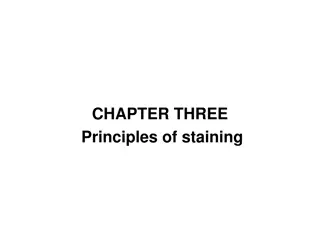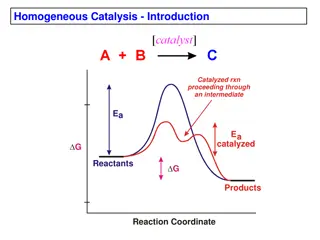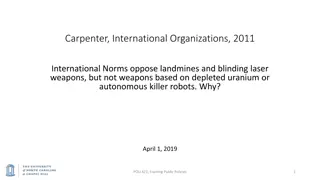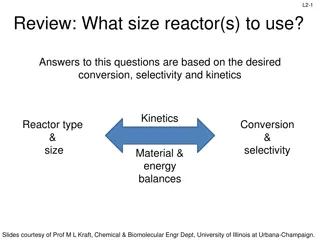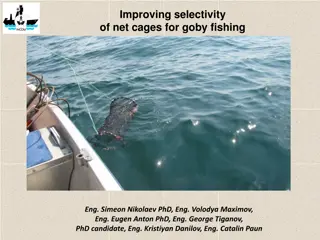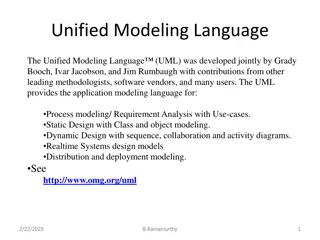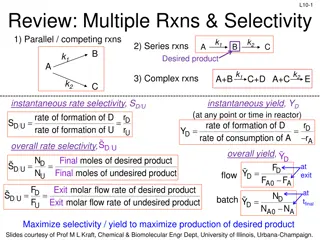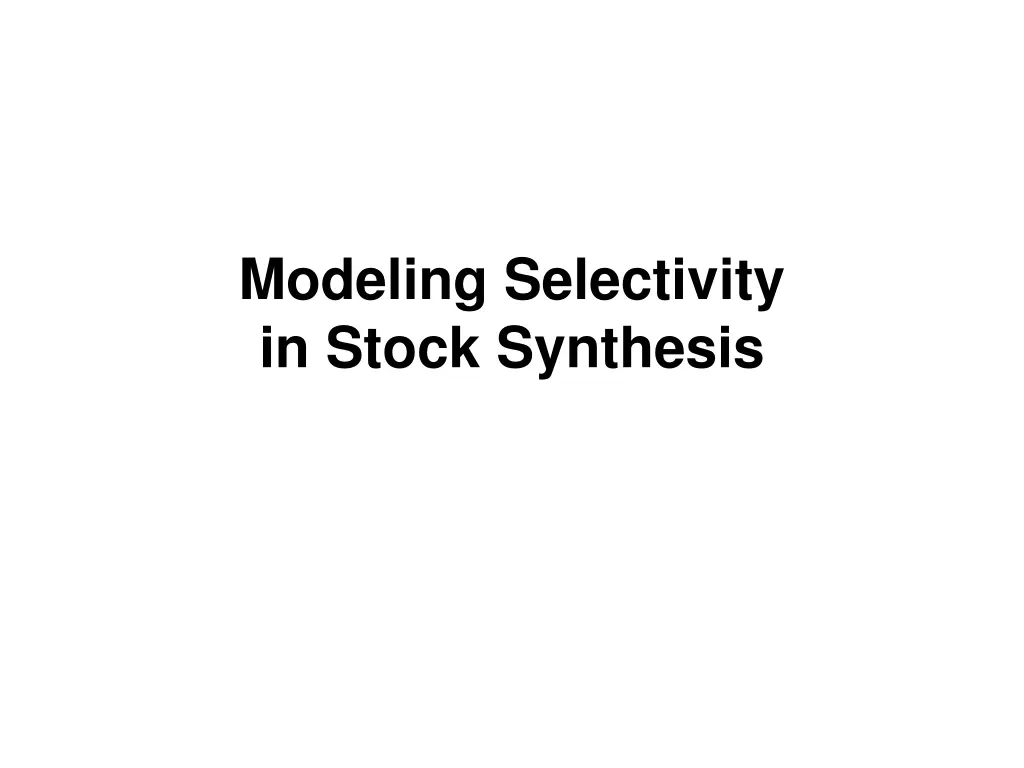
Stock Synthesis Selectivity Modeling
Explore different types of selectivity modeling in stock synthesis, including parametric and non-parametric options, semi-parametric development, and functional forms for selectivity curves. Learn about double normal selectivity, piecewise log-linear length selectivity, and pattern 17 age selectivity for fisheries management.
Download Presentation

Please find below an Image/Link to download the presentation.
The content on the website is provided AS IS for your information and personal use only. It may not be sold, licensed, or shared on other websites without obtaining consent from the author. If you encounter any issues during the download, it is possible that the publisher has removed the file from their server.
You are allowed to download the files provided on this website for personal or commercial use, subject to the condition that they are used lawfully. All files are the property of their respective owners.
The content on the website is provided AS IS for your information and personal use only. It may not be sold, licensed, or shared on other websites without obtaining consent from the author.
E N D
Presentation Transcript
Modeling Selectivity in Stock Synthesis
Selectivity in SS Parametric and Non-Parametric options Semi-Parametric option under development Selectivity can be a function of age and/or length Parameters of the selectivity curves have all the functionality as other parameters: time blocks, random variation, covariates, priors, etc.
Functional forms Full selectivity for selected range of ages or lengths Logistic commonly used for asymptotic selectivity Double normal most commonly used selectivity, allows a declining right limb Exponential-logistic Piecewise linear (in log space) function of length One value per age Random walk across ages Selex override: spawning biomass, recruitment, or rec dev Mirror selectivity of another fleet/survey
Double normal Comprised of the outer sides of two adjacent normal curves with separate variance parameters and peaks joined by a horizontal line. The parameters include the selectivity at the smallest and largest ages/sizes, the age/size where the selectivity first reaches full selectivity, the length of the plateau, and two parameters controlling the slope of the ascending and descending limbs. Can be made asymptotic by fixing some parameters Options for parameters representing selectivity at smallest and largest ages/sizes: use, ignore, or ignore and make selectivity constant below/above specified bin
Piecewise, log-linear length selectivity (#6) exp(interpolated valueL max(I.V.))
Pattern 17 (age) This selectivity pattern provides for a random walk in ln(selectivity). In typical usage: First parameter (for age 0) could have a value of -1000 so that the age 0 fish would get a selectivity of 0.0; Second parameter (for age 1) could have a value of 0.0 and not be estimated, so age 1 is the reference age against which subsequent changes occur; Next parameters get estimated values. To assure that selectivity increases for the younger ages, the parameter min for these parameters could be set to 0.0 or a slightly negative value. If dome-shaped selectivity is expected, then the parameters for older ages could have a range with the max set to 0.0 so they cannot increase further. To keep selectivity at a particular age the same as selectivity at the next younger age, set its parameter value to 0.0 and not estimated. This allows for all older ages to have the same selectivity. To keep a constant rate of change in selectivity across a range of ages, use the - 999 flag to keep the same rate of change in ln(selectivity) as for the previous age.
Exploring splines R function selfit_spline based on work of Tommy Garrison: library(r4ss) update_r4ss_files() selfit_spline(n=4, dir='c:/test/') Could not replicate ADMB s spline calculations in R late on Friday afternoon. But there s a better way
Combining selectivity at length at age Independent functions Example with two double normals: growth curve
Male offset Male (or female) selectivity is modeled two ways 1. Offset from female selectivity using a broken stick with parameters: age/size at the break point log( male / female selectivity ) at min, max, and break point 2. A function of parameters which are computed as offsets from parameters for other gender (only available for logistic and double normal)




